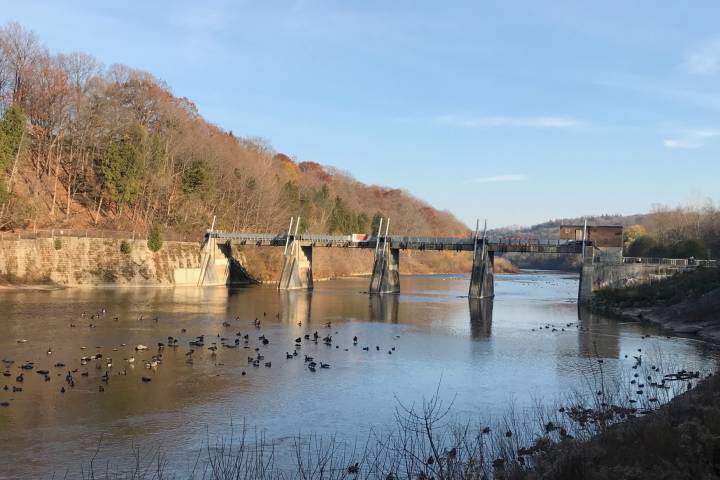It’s a decision that has been over a decade in the making.

London city council is closer to making a final decision on the future of the Springbank Dam than it has been in years.
On Tuesday, the civic works committee will review the recently completed One River Environmental Assessment as they consider their options for the dam.
Councillors will have three options to consider, rebuild the damn, decommission it, or leave it in its current condition.
City staff have recommended the dam be decommissioned.
“At the end of the day it’s probably responsible for us to completely remove it from the river,” said ward 7 councillor Josh Morgan. “It is a piece of infrastructure and just letting it rot there in the river isn’t the most responsible thing to do.”
Mayor Matt Brown promised during his 2014 mayoralty campaign to fix the dam, however, the overwhelming majority of Londoners who participated in public meetings on the dam support either decommissioning the dam or leaving it be.
70 per cent supported decommissioning the dam or leaving it as is, 24 per cent favoured fixing it and six per cent were unsure.
Environmental groups such as WWF Canada, the Thames River Anglers Association and the Chippewas of the Thames First Nation have all called for the dam to be decommissioned.
- What is a halal mortgage? How interest-free home financing works in Canada
- Ontario doctors offer solutions to help address shortage of family physicians
- Capital gains changes are ‘really fair,’ Freeland says, as doctors cry foul
- Budget 2024 failed to spark ‘political reboot’ for Liberals, polling suggests
“We’d love to see the whole dam gone, taken right out of the river,” said TRAA president Robert Hubert. “It’s really the best thing for the river and long-term, the most cost effective for London but we’re open to anything that involves making sure it can never be operated again.”
Supporters of the Back to the River project, kayakers and canoers support repairing the dam.
A previous report from city staff indicated that may be difficult. Last September staff said repairing the dam could be a “regulatory headache.”
The staff report said there had been an increase in the populations of “numerous important native species of fish, mussels and reptiles” since the failure of the dam. It also said repairing the dam would lead to habitat loss for a number of endangered and threatened species at risk.
If city politicians were to decide to get rid of the dam, it may not be cheap but there may be money available.
“We had settled a lawsuit on the dam so there’s money there that we’re not going to be asked to give back to the province or the feds. I’m not sure how much it will be to complete a full decommissioning,” said Morgan.
There has been some talk of leaving part of the dam in place, and turning it into an observational bridge in the future.
The dam has been a sore point in London since it was damaged in a flood in 2000. Repairs on the dam didn’t begin until 2006 and the issue came to a boiling point in 2008 when one of the steel gates became stuck in the open position during a test.
What followed was a lawsuit by the city against the engineers and designers and a counter-suit against the city. The case wasn’t put to rest until a settlement was agreed to in 2015 that awarded $3.7 million to London.
The civic works committee will meet next Tuesday at 4 p.m.








Comments